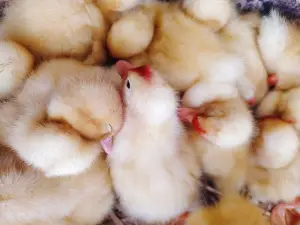
Hatching chicks can be tricky and it doesn’t always go smoothly. The fact of the matter is, sometimes, chicks die while in the incubator.
Knowing why chicks die in an incubator can help you keep your next batch of chicks from suffering the same fate. This article looks into why your chicks may have died in the incubator
Table of Contents
Dead chick in incubator:
There are a variety of reasons why chicks may die in an incubator, here are possible reasons why:
Issues with egg turning:
Eggs need to be turned while being incubated, turning keeps the developing chick from sticking to one side of the eggshell. Not turning the eggs can kill the bird in the egg.
Some incubators turn eggs automatically and others don’t. If your incubator does not turn eggs automatically then you will need to manually turn the eggs.
There are rules to turning eggs. Turning needs to be done 3 times a day but you should stop turning the eggs when the eggs enter the lockdown stage, the lockdown stage starts 3 days before hatching. This is usually at the end of day 18 of incubation.
Chicks only absorb the yolk into their bodies on the 18th or 19th day of incubation. If you turn eggs after the lockdown stage, then the yolk may become twisted and won’t be absorbed. This can kill the bird
The yolk is what nourishes the bird after hatching, it will nourish the bird for the first 48 hours after hatching. If the yolk is not absorbed then the bird can starve and die early on in its life.
What to do:
Make sure that you turn the eggs 3 times a day during incubation, and stop turning them when the lockdown stage begins.
Drowning:
Chicks can drown in their shells. An eggshell is porous, it allows both gasses and moisture in and out of the shell. This is helpful as it allows oxygen to enter and carbon dioxide to exit the shell.
However, if the humidity levels inside your incubator are too high, then too much moisture can get into the egg and drown the chick.
If the egg is surrounded by too much moisture in the incubator, and this moisture gets into the egg, the egg cannot release moisture quickly enough and the bird can drown in the egg.
Chicks break through the inner membrane of the egg to get to the air sac, once the bird breaks this membrane the bird starts to breathe.
If there is too much moisture, or fluid, in the egg then the bird can inhale the excess fluid and drown in it. If this happens you’ll notice dried fluid at the bird’s nostrils and beak once you open the egg.
An egg, at this stage, should ideally have almost no liquid left in the egg, this will keep drowning from happening.
What to do:
The best way to keep a chick from drowning in the egg is to keep the humidity levels maintained at the correct level. The humidity in the incubator should be kept at 50 – 55 % throughout the incubation process.
A lack of oxygen:
Not only can moisture get into the eggshell but oxygen can get into the eggshell as well. The eggshell is porous and this allows gas exchange to take place.
Oxygen gets into the egg and carbon dioxide exits as a waste product. Oxygen is needed as it allows the egg to replenish itself.
If the eggshell is coated with a layer of oil from your hands, because it was handled too often, then this oxygen exchange can’t happen and the chick will die in the egg
What to do:
Avoid overhandling your eggs, overhandling your eggs will transfer oil from your hands to the shell of the egg and block the pores.
If you do have to handle the eggs, wash your hands beforehand and make sure there is no oil on your hands.
Low humidity:
Chicks can die if the humidity levels in the incubator are too high but these animals can also die if the humidity levels in the incubator are too low.
Low levels of humidity can cause the bird to become shrink-wrapped.
There are membranes inside the egg. If the humidity of the incubator drops, and the environment in the incubator becomes too dry, then these membranes can tighten and dry on the chick causing the bird to become shrink-wrapped.
The bird will be wrapped so tightly that it won’t be able to hatch on its own and will die in the egg if not helped.
What to do:
Keeping the humidity levels in the incubator maintained at around 50 – 55 % during incubation is recommended.
You can use a hydrometer to measure the humidity levels in the incubator, these devices are usually more precise than some incubators.
Making sure that the incubator does not shut off during incubation is also important. Test whether the incubator works well, and has no malfunctions, by using it for 21 days before you start to incubate your eggs.
If you enjoyed this article then you may also be interested in other chicken related articles. Here are some articles that you may be interested in: Chicken Bloated And Lethargic, Lethargic Chicken With A Dirty Vent, Vent Gleet Or Egg Bound, Chicken Swollen Below Vent, Swollen Chicken Vent

